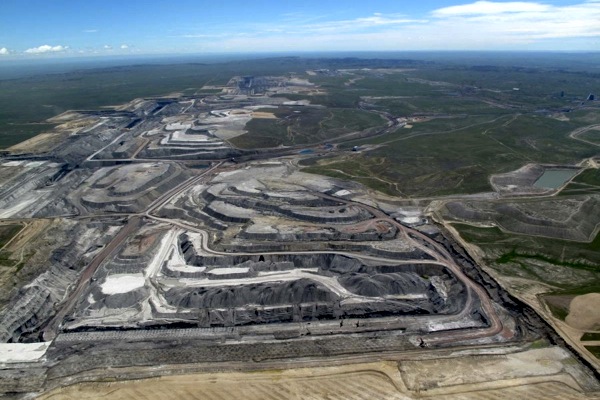Arch Coal’s bankruptcy suggests a questionable strategy
Arch Coal’s bankruptcy filing acknowledges a financial fact, that the company is overleveraged. It continues, however, to ignore market reality.
The filing identifies $5.1 billion in long-term debt. It places enterprise-wide annual debt service payments at $360 million. The filing details the company’s failed attempt to reorganize these debt levels at $4.2 billion with annual debt service of $291 million. And Arch has concluded that at the current price of coal operations it cannot sustain even this level of reduced debt.
We do not know what the outcome of the bankruptcy proceeding will be with regard to debt load, but the plea from Arch is that if it can just get rid of this debt load it can become profitable.
Arch’s third-quarter 2015 numbers dressed up the company well for the bankruptcy filing. If you net out their impairment ($2 billion in lost value) and costs of the Patriot Coal bankruptcy the company is much closer to breaking even than last year’s $558 million loss. To its credit, Arch points to cost control in both Central Appalachia and the Powder River Basin. So, Arch argues that taking away some or all of the $360 million debt service obligation redeems the company as a going concern.
Does it?
Let’s take a look at operations for Arch in the Powder River Basin, where it generates more than half of its annual income. In its 2014 10K issued in February 2015 the company projected 2016 Powder River Basin prices for the company hitting $14.58 per ton. Nine months later, at the end of September, 2015 Arch lowered it 2016 Powder River Basin estimate to $13.39 per ton. The company discloses that 66 million tons is under contract for 2016 at these prices. In September 2015—when Arch was making its 2016 forward-looking projection—Platts was looking at spot prices of $11.20 through 2016. Today Platts see Powder River Basin spot prices at sub-$10 per ton through 2017. The Energy Information Administration’s recent short-term outlook also shows weak 2016 pricing.
The company has already reduced costs in the Powder River Basin. Going forward, the risk of erosion on both the price side and the company’s ability to continue to reduce costs is high. The workhorse mine for Arch, Black Thunder is maturing. In coal mining, geology drives costs over time, and a debt discussion is a discussion of the company over time.
IT IS UNDERSTANDABLE THAT ARCH WOULD HAVE A HARD TIME GRASPING JUST HOW FAR COAL PRICES WILL FALL—MOST COMPANIES IN THE INDUSTRY ARE GETTING IT WRONG TOO.
Paradoxically, the continued downward price slide is driven in no small measure by an unwillingness by the companies to discipline production.
The way Arch is able to keep its contract prices almost 40 percent above spot prices is because regulated utilities are able to bring their overall costs low enough to keep some coal in their portfolio mix. How long are utilities going to keep this up and how long are public service commission’s going to grant higher prices for coal-fired plants when cheaper alternatives continue to be available quarter after quarter?
Arch says it plans to close no mines. It says it plans to continue business as usual during the bankruptcy and to emerge with less debt. It assumes the market going forward will support its current production levels. Its filing it notes that its divest, close and idle strategy is more divest and idle then close. The company is simply planning to add the same amount of coal from Arch operations to the currently oversupplied market.
This, of course, is the plan at most other coal companies and it is a recipe for unsustainable prices. The question of mine closings is important, the corollary question of which companies should close its doors is a close second.
Arch executives seem oblivious to this trend in the coal markets. The company also mentions that natural gas prices are low and this has cut into its markets, yet no outlook is offered for those prices. The EIA’s recent shor-term outlook shows some uptick in natural gas prices and coal prices in 2017. This uptick will not create price increases high enough or sustained for a period long enough to send new prices signals to incentivize new investment in mining, however.
The Arch filing does not mention the role of renewables as competition for the company. In Texas, the state with the fastest-growing wind power capacity buildout in the country, Arch has lost almost five million tons in coal sales from the Black Thunder mine since 2012. Power plants at Coleto Creek, Fayette, Spruce, Deely, Sandy Creek and Tolk have all decreased their purchases. Only coal sales to the Harrington plant have remained flat.
The Powder River Basin is Arch’s strongest region and is likely to grow as the go-to region for the remaining coal demand in the country going forward. Arch’s cost of production even with the reductions remains around $10 per ton, higher than its competition at Cloud Peak and Peabody.
Central Appalachian thermal and metallurgical markets look considerably worse.
A wise man once said: “A speculator is someone who yesterday did not have a penny and today is millions in debt.”
At the end of the day, without the debt the speculator still did not have a penny.
Tom Sanzillo is IEEFA’s director of finance.
{{ commodity.name }}
{{ post.title }}
{{ post.date }}


Comments